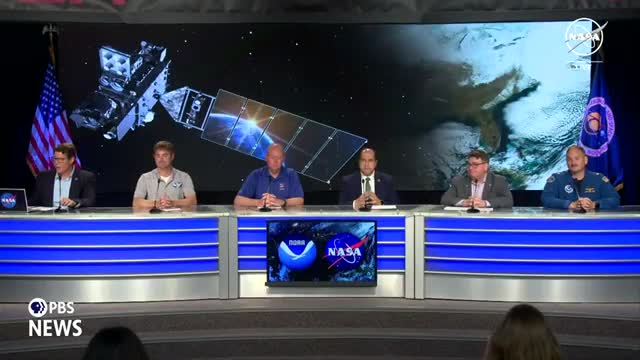NASA's new satellite promises faster wildfire detection

This article was created by AI summarizing key points discussed. AI makes mistakes, so for full details and context, please refer to the video of the full meeting. Please report any errors so we can fix them. Report an error »

During a recent government meeting, experts discussed advancements in satellite technology for wildfire detection, specifically focusing on the capabilities of the GOES R satellite and its upcoming successor, GeoXO. Phil Moyer, a former user, inquired about the minimum size of fires detectable by these satellites and how their capabilities compare to terrestrial detection methods.
The response highlighted that the detection capability of GOES R is influenced by the fire's temperature; hotter fires can be detected at smaller sizes. An illustrative example was provided where a hot spot, as small as a barn fire, was identified in Kentucky during the night using satellite imagery.
Looking ahead, the GeoXO satellite is expected to enhance detection capabilities significantly. With an improved resolution in the fire detection band by a factor of four, GeoXO could potentially identify fires four times smaller than those currently detectable by GOES R. This means that while a one-acre fire can be detected now, in the future, a quarter-acre fire could be identified.
In terms of response time, the technology allows for rapid information relay to emergency responders, with data being available within minutes of detection. The satellites can scan as frequently as every 30 seconds, ensuring timely alerts for fire incidents.
Additionally, the meeting touched on the integration of machine learning and artificial intelligence in predicting lightning levels, which could enhance storm warnings and potentially indicate conditions favorable for tornado formation. This research underscores the ongoing efforts to leverage technology for improved weather forecasting and disaster response.
The response highlighted that the detection capability of GOES R is influenced by the fire's temperature; hotter fires can be detected at smaller sizes. An illustrative example was provided where a hot spot, as small as a barn fire, was identified in Kentucky during the night using satellite imagery.
Looking ahead, the GeoXO satellite is expected to enhance detection capabilities significantly. With an improved resolution in the fire detection band by a factor of four, GeoXO could potentially identify fires four times smaller than those currently detectable by GOES R. This means that while a one-acre fire can be detected now, in the future, a quarter-acre fire could be identified.
In terms of response time, the technology allows for rapid information relay to emergency responders, with data being available within minutes of detection. The satellites can scan as frequently as every 30 seconds, ensuring timely alerts for fire incidents.
Additionally, the meeting touched on the integration of machine learning and artificial intelligence in predicting lightning levels, which could enhance storm warnings and potentially indicate conditions favorable for tornado formation. This research underscores the ongoing efforts to leverage technology for improved weather forecasting and disaster response.
View full meeting
This article is based on a recent meeting—watch the full video and explore the complete transcript for deeper insights into the discussion.
View full meeting